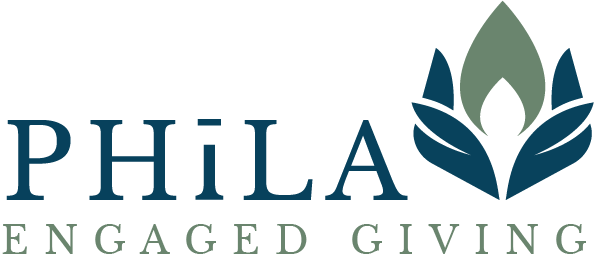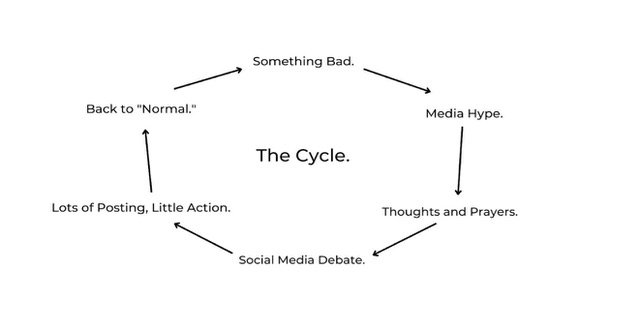By Sofia Michelakis
Over the holidays, I was having lunch with two friends who are resource mobilizers for large scale social change efforts. They both shared poignant stories of recent conversations they've had with high capacity donors who are decreasing their giving relative to previous years. Their reasons were some you might expect– economic uncertainty, busy lives etc.--and some you might not– fear of public criticism and wondering if it's the right time to go big.
This got me thinking about my experiences working with some of the most generous people in the world over the past decade. One question I keep asking is what is stopping extremely wealthy people from making 9-, 10- and even 11-figure gifts now and early in the New Year? Especially knowing that, in many cases, gifts of this size are paid out in multi-year installments and allow social sector leaders the freedom to dream big and execute large scale solutions.
A scarcity mindset affects even those with the most resources and advantage.
By mindset, I mean a set of attitudes, a worldview or philosophy of life. Mindsets are important because our beliefs and attitudes affect everything we do in life. I propose that the following five shifts in mindset for individual donors would go a long way toward increasing their confidence to make large scale gifts, even during economically challenging times. Whether you're an individual of great means, or someone who works closely with donors, I hope that these suggestions and examples will be useful.
1. Recognize that social problems compound too
I can't tell you how many philanthropists I've met who have really struggled with when to start giving. They often wonder if it might be better to wait to give in order to increase their wealth over time and have more to give away. While the desire to have more to give is laudable, I've often counseled that it is equally important to examine the societal costs of waiting.
Social problems are compounding, often at a faster rate than your wealth is compounding. Take climate change, for example. We have a very narrow window in which to act collectively as a global society to combat climate change. Philanthropy won't be the only solution, but it can be a critical accelerant. We need a mindset of acting with greater urgency in philanthropy. In fact, the very survival of the planet depends on it.
2. You do have enough
When I talk to philanthropists who just a year ago were conscious that their wealth accumulation is outpacing the speed of their giving, I am struck that many of them over the last 6-9 months now believe that the stock market has eliminated that challenge. This belief leads some people to conclude that they should slow down the pace and amount of their giving.
It is human nature for all of us—not just the very wealthy—to take a very short-term approach to comparing what we have now with what we used to have. I get my retirement fund quarterlies, and what does it reveal? It details my current balance compared to last quarter and last year at the same time. That's it.
Philanthropists should have a longer-term horizon and look at their wealth accumulation over a decade. Over this period, a lot of ultrawealthy people have seen their wealth double and even triple in size. Taking a more holistic and longer look back, recognizing that, "gee, overall, I'm way up" may be quite illuminating and increase confidence in being more generous.
Most billionaires give well below their potential and can afford to add a zero (or two!) to their annual giving.* I love it when newer philanthropists set an annual budget for their giving and then materially increase that amount every year as they gain experience and confidence with larger gifts.
*An exception is people whose wealth is entirely tied up in a private company, limiting their capacity to give until they have a liquidation event.
3. You are not too busy
One of the most common areas of scarcity thinking is in relation to time. I can relate. When someone asks me, "how are you?" the first thought in my head—especially during year-end craziness—used to be "busy." We need to reframe how we look at the competing demands on our time. Feeling too busy is a state of mind. It's more how we perceive our lengthy to-do list and we can become overwhelmed.
There are approaches that we use when we have long to-do lists in our jobs and personal lives. We prioritize, and we get help.
The unconscious decision many donors make when they feel overwhelmed and busy is to de-prioritize their giving when they could be asking for help and delegating more. Here are three strategies for busting the "too busy" mindset:
Outsource your giving to a reputable collaborative or give to a collective fund.
Hire a competent professional philanthropic advisor to help you articulate your giving criteria and develop customized recommendations that will enable you to give with confidence.
If you're the DIY type, use give lists and/or grantees of your local community foundation as a short-cut to identify great organizations to fund.
In short, don't let being too busy be a barrier to joyful giving. Develop a mindset that you have lots of choices for how to attack the busy-ness of your life!
4. Trust goes both ways; give in ways that earn trust
There is sometimes a misguided belief that people who choose nonprofit work have independent means (therefore needing less pay) and superhuman sources of energy (therefore needing less support and time off). We need to recognize social sector workers are essential workers and we can't keep taking them for granted. Less than 1% of philanthropy goes to programs directly benefiting women and girls of color. Furthermore, organizations led by women of color receive smaller grants on average and are more likely to receive restricted funding. Is it any surprise that these leaders are burnt out?
It's not just donors who need to learn to trust nonprofits. Decades and centuries of systems of oppression have led to nonprofits and communities, quite understandably, not trusting philanthropists.
A thought exercise that would be helpful to donors is to consider "how does my giving earn trust from my grantees?"
In particular, philanthropy can support women of color leaders better. A significant way to do that is through bold, unrestricted gifts so that they can focus more time on the mission and serving communities, and less time on fundraising and reporting. You will likely find that it leads to greater social impact too. Naina Batra, Jeroo Billimoria, Morgan Dixon, Cheryl Dorsey, Bridgitt Antoinette Evans, Vanessa Garrison, Robin Wall Kimmerer, Solome Lemma, Sudha Nandagopal, and Ai-jen Poo are just a few of the brilliant women of color I admire and who are leading complex, essential work for the world.
MacKenzie Scott attracts a lot of attention for the breadth and size of gifts she makes without strings attached. But she is by no means alone. Some of the other philanthropists I respect for giving at scale and developing trusted partnerships with social sector leaders: Tegan and Brian Acton, Arnold Ventures, Ron Conway, Civic Ventures, Echidna Giving, Chuck Feeney, Gatsby Charitable Foundation, Eileen and Paul Growald, George Kaiser, Libra Foundation, Tricia and Jeff Raikes, Rohini and Nandan Nilekani, Azim Premji, Liz Simons and Mark Heising-Simons, SeaChange Foundation, Stacy Schusterman, and Cari Tuna. These donors use a range of giving vehicles and approaches, from organizations they have founded, to donor collaboratives, to direct giving, and funding advocacy and policy change.
5. An attitude of abundance and generosity will increase your wealth and happiness
Buddhists teach that having a giving heart creates the karmic conditions for future wealth. The inverse is also true—miserliness creates the karma for future poverty. Similar beliefs are reflected in many other world religions as well. Common sense agrees. We've all witnessed in our lives people who have very little, but nonetheless are open and generous in sharing with those who have even less than themselves. These people exude joyfulness and abundance.
If you don't believe world religions or common sense, there is scientific evidence to back up this theory as well. Researchers at Notre Dame reported that on average generous people make more money in the long run than people who are selfish. There is also evidence connecting generosity with better overall health and greater happiness. Giving generously to increase the happiness of others has huge benefits for the givers themselves.
Embracing a growth mindset and developing new attitudes can help every donor break through the inhibiting, tight feelings that arise from succumbing to a scarcity mindset. Lean into your sense of abundance this year. Your families and your communities will benefit, and I guarantee that you will personally experience more happiness as well.
Edited from an article originally posted on LinkedIn December 12, 2022
Sofia Michelakis is a connector, guide, and experienced leader who helps people turn their vision for social change into action. As former lead strategist and deputy director overseeing the Giving Pledge and past board chair of Social Venture Partners International, she is a trusted bridge between philanthropists, their teams, and nonprofit leaders. Sofia has partnered with influential global visionaries on giving strategy and family engagement, developed engaging curricula and winning models for social impact, and frequently acts as moderator for in person and virtual executive convenings.

























